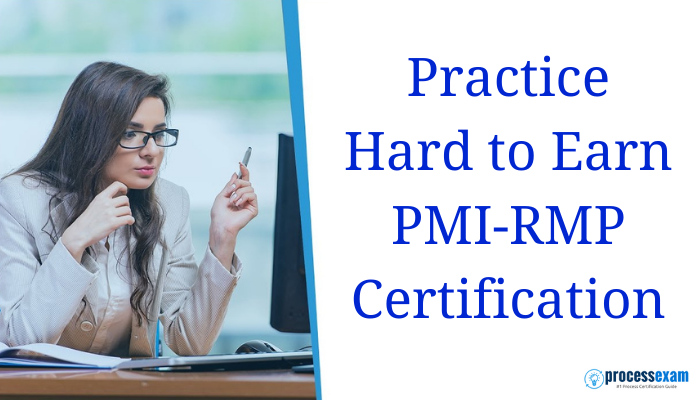
The PMI Risk Management Professional (PMI-RMP) highlights your ability to recognize and access project risks, mitigate threats and capitalize on opportunities. In this capacity, you improve and protect the needs of your organization. Achieving this certification sets you apart from other professionals and credit to your organization.
This PMI-RMP exam will enable you to best use risk management principles to execute projects more successfully. You will learn to plan for each project with a structured approach unique to that project, and remember to keep your team focused throughout the project's lifetime.
You will also get an introduction into preparing for and taking the risk management examination, focused on five key domains: risk strategy and planning, stakeholder engagement, risk process facilitation, risk monitoring, and reporting, and performing specialized risk activities.
Importance of PMI-RMP Certification
-
Uncertain economic environments, evolving customer needs, competition, and stiffer regulation have made risk management indispensable for assuring essential business objectives.
-
Risk management helps you influence outcomes- scope, time, cost, and quality. It enables you to minimize threats and maximize opportunities.
-
Demand for risk management competence is witnessing a steep rise, paving the access to new and more rewarding career opportunities.
-
PMI-RMP is positioned to recognize and confirm your ability to ensure project success through professional risk management and increase your market value.
How to Prepare for the PMI-RMP Certification?
Practice Standard for Project Risk Management should be read at least twice, and you need to use that for any references at a later point in time in your preparation. The first-time should be used to go through the book once, to get intimate with all the tools and techniques, inputs, and outputs from all the rules related to risk management. The second-time reading should concentrate more on consolidating these concepts and understanding the relationship between different approaches.
A review of the PMBoK latest edition is necessary to get the question well in the exam. This will assist you in improving your project management knowledge. Risk management cannot be performed in a vacuum, and it needs to be integrated with other project management processes, and the exam questions would be in this way.
Plan to have the group study with your colleagues who are also preparing for this exam. Try to have a group of not more than three to have the best advantage and minor deviation in your preparation plan. Choose chapters for each discussion and give enough time for preparing yourself before going for the group discussion. This will serve to get the best out of the group discussion. If you are not ready for any meeting, please reschedule it to a later date.
-
Flashcards are an essential tool that needs to be used effectively throughout your preparation for this PMI-RMP. It helps you to recollect binding terms and thoughts for the exam.
-
Use PMI-RMP actual question bank to practice test your data in each risk management domain area.
-
Take the PMI-RMP exam practice test. This will identify your weak areas, and you can focus more on these topics where you are not comfortable answering the questions.
What Is the Importance of the PMI-RMP Practice Test?
A PMI-RMP certification candidate needs to evaluate the actual test's simulated environment to see where they are standing before the actual exam.
PMI-RMP exam simulation software usually has high-quality questions and helps you analyze where you stand at that time. Taking an exam for 3.5 hours requires physical and mental strength and techniques to keep yourself focused. Practice testing helps us practice this, and you will learn how to go about the exam with more accuracy. You can plan your exam in the right approach based on these experiences.
The questions are from all the risk management domain areas, and practicing these tests helps manage the questions effectively. Instead of understanding the problems in the exam site, realize these problems during the PMI-RMP practice test. This would help plan for these problems, and if you reencounter the issue in the exam, you can easily handle it.
Plan to take the PMI-RMP practice test only when you have prepared well and ready for that. This would assist in getting the maximum from this step. You can employ the simulation software during the last month of your preparation. Have sufficient breaks between two mock tests to work on the weak states in your first test, and be ready for the next test.
Overall, you can plan for 3 to 5 practice tests, and this process needs to be performed at least five days before the exam date. This will serve to address any gaps you have in the ultimate practice test before the actual PMI-RMP exam.
Summary
The PMI-RMP credential behind your name provides way too many benefits. In addition to apparent advantages such as having the edge in your job search over those without the PMI-RMP certificate, it also may allow you to negotiate a higher salary and get your resume noticed earlier. Many employers look for a highly specialized professional, such as a risk management employee, and one with the PMI-RMP credential are preferred.
